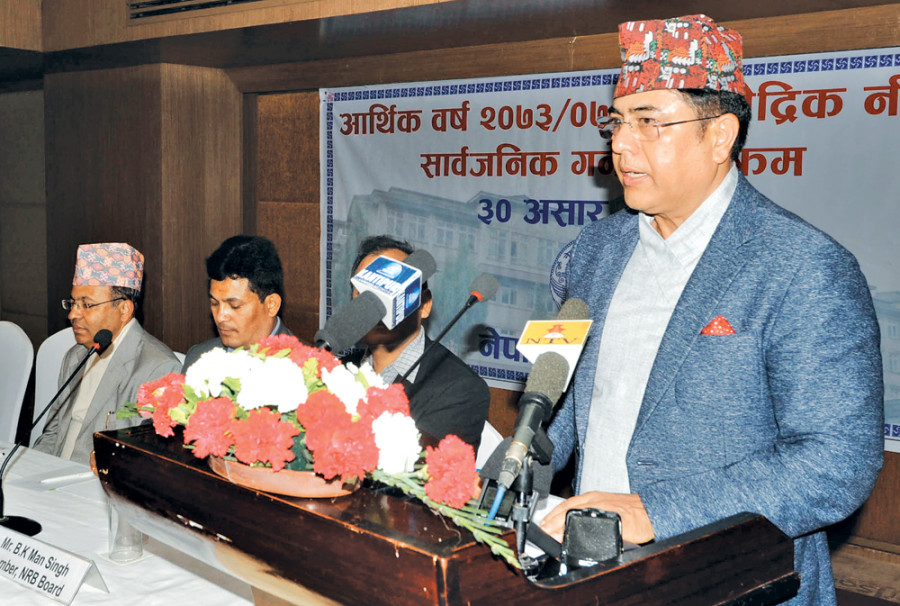Money
NRB limits interest rate spread for MFIs to 7pc
Nepal Rastra Bank (NRB) has limited the interest rate spread for Micro-Finance Institutions (MFIs) to 7 percent and halted the issuance of new MFI licences.
Bibek Subedi
Nepal Rastra Bank (NRB) has limited the interest rate spread for Micro-Finance Institutions (MFIs) to 7 percent and halted the issuance of new MFI licences.
Unveiling the new Monetary Policy on Thursday, the central bank put in place the provisions amid increasing complaints about MFIs charging higher interest rates to borrowers, who are mainly low-income people.
NRB also made a six-fold increment in the paid-up capital requirement for MFIs involved in wholesale lending. The initiations will have to increase their capital to Rs600 million by mid-July 2018 from existing Rs100 million.
Currently, four MFIs—Rural Microfinance Development Centre, Sana Kisan Bikas Bank, First Microfinance and RSDC Microfinance—are involved in wholesale lending.
Meanwhile, devising the monetary policy became tricky for the central bank amid the Nepali Congress and the CPN (Maoist-Centre) registering a no-confidence motion against the KP Oli-led government in the Parliament and uncertainties over the endorsement of the new budget by the Parliament. With an expansionary budget presented by the Oli administration, NRB had to bring a rather tight monetary policy to check inflation. But it also had to increase money supply to help the economy attain the ambitious growth target of 6.5 percent set by the budget.
The central bank, however, chose a mid-way, aiming to limit the growth in money supply to 17 percent and channelise credit to the productive sector.
The policy has increased the compulsory lending to energy and agriculture sectors by commercial banks to 15 percent from the existing 12 percent.
Bankers welcomed the NRB move, stating they are intuitionally ready to increase lending to the sectors. “We are ready to increase lending to energy and agriculture sectors,” said Himalayan Bank CEO Ashoke Rana. “There have been talks about signing new power purchase agreements with different hydropower developers. In that case, banks would definitely like to increase their lending to hydropower projects.”
The policy has also made it mandatory for commercial banks to directly lend 2 percent of their total loan portfolio to the deprived sector.
According to bankers, directly lending 2 percent of total loan portfolio to the deprived sector can be a huge challenge for commercial banks. “This not a sector in which commercial banks have expertise,” said Nepal Bankers’ Association President Upendra Poudel.
According to the policy, banks and financial instructions can only extend credit amounting to 50 percent of the value of the shares. Earlier, they could lend up to 60 percent of the share value.
As far as real estate lending is concerned, the BFIs can lend up to 50 percent of the total valuation in case of commercial real estate, whereas such lending can go up to 60 percent in case of individual housing loans.
- Halt in the issuance of new MFI licences
- Paid-up capital requirement for national-level MFIs increased to Rs600 million
- Interest rate spread for BFIs limited to 5 percent
- Margin lending up to 50 percent of stock value
- Lending to commercial real estate up to 50 percent of the valuation
- Lending to individual housing up to 60 percent of the valuation
- Mandatory lending to energy and agriculture increased to 15pc of the loan portfolio
- Increased the upper limit for consortium financing to Rs1 billion




 20.12°C Kathmandu
20.12°C Kathmandu















